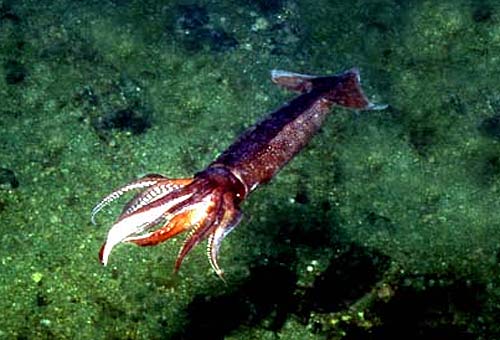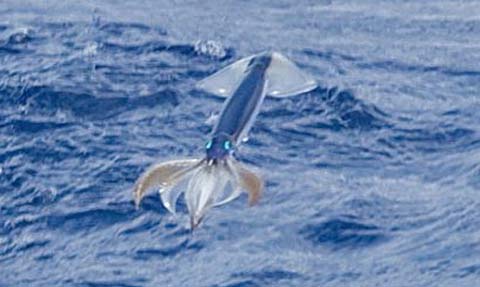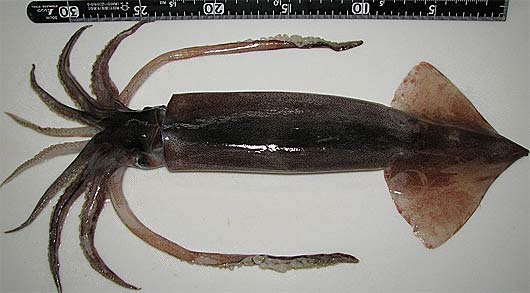Japanese Flying Squid – Leaping Cephalopod

Native the the northern Pacific Ocean (the coasts of Japan, China, Russia, Canada, Vietnam and Alaska), the Japanese flying squid, also known as the Japanese common squid is an eight-armed and two-tentacled cephalopod known for its ability to leap out of the water. It does this in order to conserve energy and avoid predators during mating migrations. The Japanese flying squid has been witnessed exiting the water and “flying” through the air for distances over 150 feet (50 meters). The squid accomplishes this through a form of jet propulsion that involves the taking in and expulsion of water at forces you wouldn’t expect a creature of its size to achieve.

Generally, these creatures can weigh about 1.1 pounds (500 grams) and can have a length of up to around 1.5 feet (50 centimeters). The average life span of such a squid is very short (about 1 year) because they are so heavily preyed upon by creatures like sperm whales, dolphins, seals, baleen whales and rays. Chinese, Japanese and other people in the region fish the squid for consumption. Also contributing to the short life span, is that they die as soon as they reproduce (1 year is usually the time it takes for them to reach sexual maturity, mate, and lay eggs).

Japanese flying squid also have three hearts, and the ability to shoot ink at predators. They are comfortable in a range of temperatures and can survive almost freezing 36 degrees Fahrenheit (2 degrees Celsius) to 81 degrees Fahrenheit (27 degrees Celsius) . They usually inhabit the top layer of the ocean, that gives them access to the open air.

